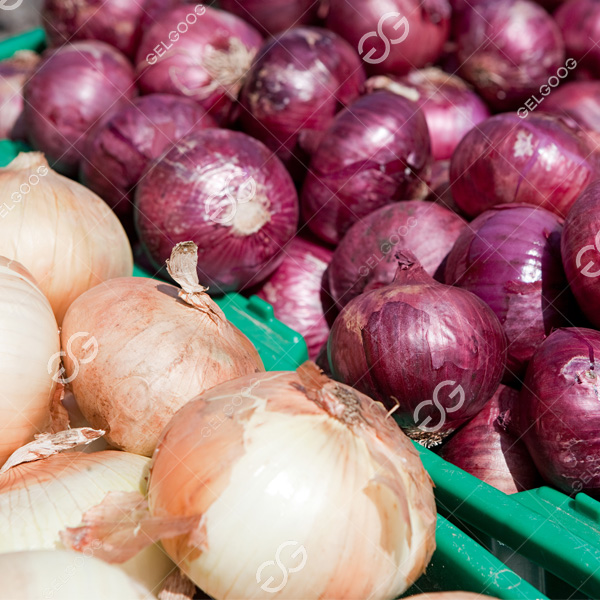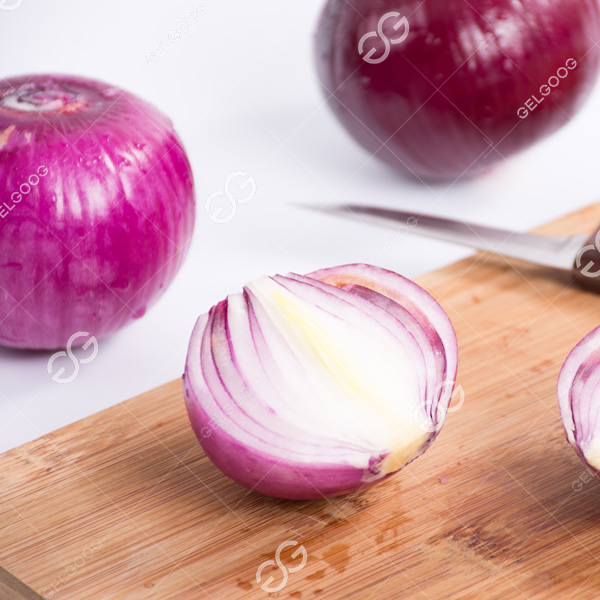Exploring Onion Processing: Challenges, Methods, and Sustainable Byproducts
Time:2023-06-21By:admin
Onions, the versatile vegetable with their distinct pungent flavor, are a staple ingredient in various cuisines worldwide. From soups and salads to stir-fries and sauces, onions add depth and aroma to countless dishes. However, behind their culinary significance lies a complex process of production and processing. In this article, we delve into the methods of processing onions, the challenges faced by onion producers, and the sustainable byproducts derived from this popular vegetable.

Methods of Processing Onions:
Processing onions involves several key steps to transform them into desirable forms for culinary use. Let's explore some of the common methods:
Sorting and Grading:
Upon harvest, onions undergo sorting and grading processes. They are evaluated based on factors such as size, color, and quality. This ensures consistency in the final product and helps meet market requirements.
Washing and Cleaning:
To remove dirt, debris, and outer layers, onions are thoroughly washed and cleaned. This step enhances food safety, removes impurities, and prepares the onions for subsequent processing stages.
Peeling:
Peeling onions can be a labor-intensive task. However, specialized equipment or manual labor is employed to remove the outer layers. This step reveals the fresh layers underneath, ready for further processing.
Slicing or Dicing:
Depending on the desired application, onions can be sliced or diced. Slicing produces thin, circular rings, while dicing results in smaller, uniform pieces. These different cuts cater to diverse culinary needs, from sautéing to garnishing.
Drying:
Drying onions is a common method of preservation. By removing moisture, the shelf life of onions can be significantly extended. Dried onions can be used in powdered form or rehydrated for various culinary purposes.
Freezing:
Freezing onions is another method to preserve their freshness. Sliced or diced onions are flash-frozen, locking in their flavor and texture. Frozen onions are convenient for quick meal preparation and retain much of their original taste.
Challenges in Onion Production:
Despite their widespread popularity, onion production faces several challenges that impact growers worldwide. Let's explore some of the key issues:
Pests and Diseases:
Onions are vulnerable to a range of pests and diseases, including thrips, onion maggots, fungal infections, and viral diseases. These threats can cause significant damage to onion crops, leading to yield losses and decreased quality.
Storage and Shelf Life:
Proper storage conditions are essential to maintaining the quality and shelf life of onions. High humidity or inadequate ventilation can promote spoilage, sprouting, and the development of molds. Finding optimal storage solutions is crucial for preserving the harvested crop.
Weather Sensitivity:
Onion production is heavily influenced by weather conditions. Extreme heat, cold snaps, or excessive rainfall can adversely affect growth, bulb development, and overall yield. Fluctuating weather patterns can pose challenges for onion farmers, impacting productivity and crop quality.
Bulbing Inconsistencies:
Onions require specific environmental conditions and proper cultivation techniques to develop uniform bulbs. Factors such as inconsistent watering, inadequate fertilization, or irregular weather patterns can lead to irregular bulb formation. This can result in variations in size, shape, and marketability.

Sustainable Byproducts of Onion:
While onions are primarily cultivated for their bulbs, the processing of onions also yields valuable byproducts. Let's explore some of the sustainable uses for these byproducts:
Onion Peels:
Onion peels, the discarded outer layers, can be repurposed rather than treated as waste. They are rich in antioxidants and can be used in various applications. Onion peels can be utilized for composting, contributing to organic waste management and soil enrichment.
Animal Feed:
Onion peels can be included in animal feed formulations for certain livestock species. Proper processing and incorporation into feed rations can provide additional nutrition and fiber content for animals.
Bioactive Compounds:
Onion peels contain bioactive compounds with potential health benefits. These compounds can be extracted and used in the production of natural dyes, food additives, or dietary supplements.
Conclusion:
Onion processing involves a series of methods, from sorting and grading to peeling, slicing, and drying. Despite the challenges faced by onion producers, such as pests, storage issues, weather sensitivity, and bulbing inconsistencies, the industry continues to thrive. Furthermore, sustainable byproducts like onion peels offer various environmentally friendly applications, contributing to waste reduction and resource optimization. By exploring innovative solutions, onion producers can overcome challenges and ensure a sustainable and efficient production process for this beloved vegetable.










 E_mail
E_mail contact
contact Whatsapp
Whatsapp TOP
TOP